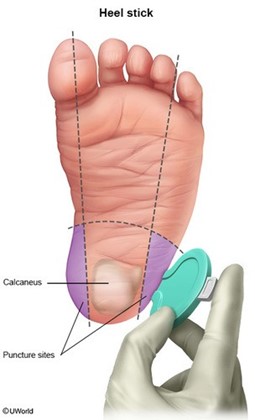A nurse is assisting with an admission interview for a client who has schizophrenia. He tells the nurse that he is receiving special audible messages from the Central Intelligence Agency that no one else is able to hear. The nurse should identify that the client is having which of the following alterations in perception?
Derealization
Illusion
Hallucination
Depersonalization
The Correct Answer is C
c. Hallucination
In the scenario described, the client's experience of receiving special audible messages from the Central Intelligence Agency that no one else can hear indicates a hallucination. Hallucinations are perceptual disturbances in which a person experiences sensory perceptions without any external stimuli. They can occur in any sensory modality, such as hearing (auditory hallucinations), seeing (visual hallucinations), smelling (olfactory hallucinations), tasting (gustatory hallucinations), or feeling (tactile hallucinations).
In this case, the client is experiencing auditory hallucinations, as he is perceiving auditory stimuli (audible messages) that are not present in the external environment. Auditory hallucinations are most commonly associated with schizophrenia, although they can occur in other psychiatric disorders as well.
Derealization (option a) refers to a subjective feeling of unreality or detachment from the environment. It involves a perception that the external world is strange, distorted, or unreal. This is not the primary alteration in perception described in the scenario.
Illusion (option b) is a misinterpretation or misperception of a real sensory stimulus. It occurs when a person's perception of an actual stimulus is distorted or misunderstood. There is no indication of a misperception of a real stimulus in the scenario.
Depersonalization (option d) is a subjective experience of being detached from one's own body, thoughts, or emotions. It involves a feeling of being outside of oneself or observing oneself from a distance. This is not the primary alteration in perception described in the scenario.
Therefore, the correct answer is c. Hallucination, as the client's experience of receiving special audible messages that no one else can hear represents an auditory hallucination.
Nursing Test Bank
Naxlex Comprehensive Predictor Exams
Related Questions
Correct Answer is B
Explanation
Explanation:
The nurse should respond by recommending that the parent avoids administering aspirin to the child. The use of aspirin in children, especially those under the age of 18, is associated with the risk of developing Reye's syndrome, a rare but serious condition that affects the liver and brain. It is important to educate parents about the potential risks of using aspirin in children, particularly when they have a fever. Instead, the nurse should advise the parent to use appropriate dosages of acetaminophen or ibuprofen based on the child's weight and follow the label directions for administration.
Option a suggests following the label directions based on the child's weight, which may not specifically address the use of aspirin in children and the risk of Reye's syndrome. Option c, stating that the child will require an antibiotic if she develops a fever, is incorrect because antibiotics are not indicated for all fevers and should only be prescribed if there is an underlying bacterial infection. Option d, suggesting that the child can have two baby aspirins every 4 hours, is incorrect and contradicts the recommendation to avoid administering aspirin to the child.
Correct Answer is C
Explanation
The nurse should apply a heat pack 5 to 10 minutes prior to the procedure when planning to obtain blood from a newborn via a heel stick. This helps to increase blood flow to the area and makes it easier to obtain the specimen.
a) Puncturing the heel to a depth of 4 mm is too deep and can cause injury to the newborn. The recommended depth for a heel stick is 2.4 mm or less.
b) Withholding feeding prior to collecting the specimen is not necessary.
d) Elevating the newborn's foot for 15 minutes following the procedure is not necessary.

Whether you are a student looking to ace your exams or a practicing nurse seeking to enhance your expertise , our nursing education contents will empower you with the confidence and competence to make a difference in the lives of patients and become a respected leader in the healthcare field.
Visit Naxlex, invest in your future and unlock endless possibilities with our unparalleled nursing education contents today
Report Wrong Answer on the Current Question
Do you disagree with the answer? If yes, what is your expected answer? Explain.
Kindly be descriptive with the issue you are facing.
